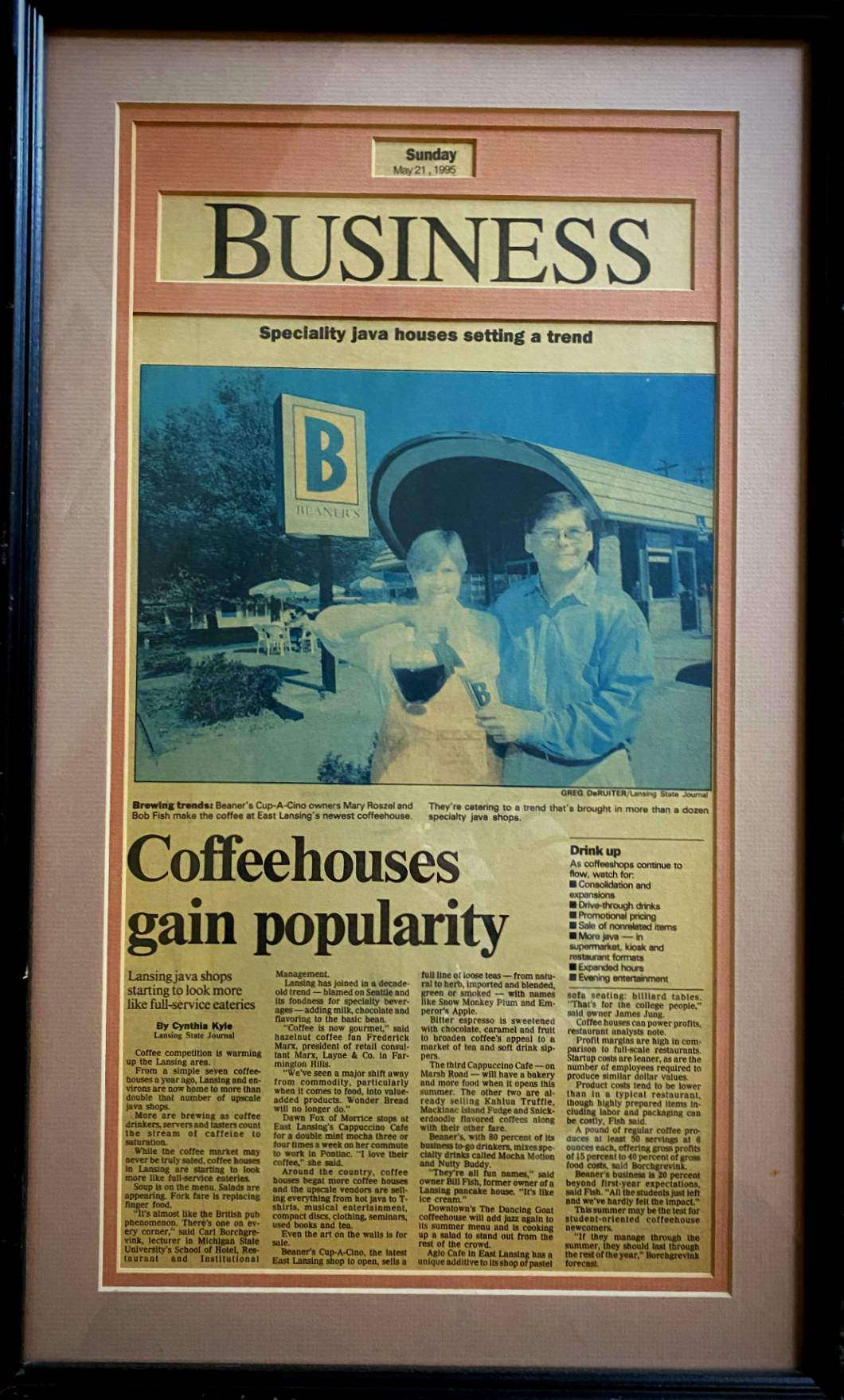By Bob Fish
In 1993, I was the owner of a pancake restaurant in Lansing, MI when I read a book about “mega trends.” One of those 90s trends was that Boomers and Gen-Xers were aggregating more discretionary income than any generation before them.
They were using it to travel, exposing themselves to a wide array of cultural experiences. That changed them and their buying behavior. They began to expect more quality, variety and flavor in their food. They were moving from high commodity/high volume choices to a high quality/low volume model. It happened with their bread, their beer and, as we all know, their coffee.
The Birth of BIGGBY
The moment I understood that, everything changed. I decided in one single day to get out of the over commoditized breakfast business into the un-commoditized specialty coffee business.
There were other factors too. I grew up in Europe and developed a taste for high quality coffee. Unlike most of my peers, I grew up on coffee not soda pop. I loved coffee. Finally, as a business, coffee had high margins and was easy to teach and reproduce.

That was then. Capitalizing on that mega trend is one of the many things that propelled BIGGBY COFFEE forward to the 250-unit chain that it is today. We became masters of innovation in product, constantly feeding the desire for new, interesting flavors.
But to continue to grow, something else needed to evolve.
Commoditized People
Do you remember President Ronald Reagan’s firing of the Air Traffic Controllers? That happened on August 5th, 1981, the year I graduated from High School. From that moment, right up to the Great Recession of 2008, workers and people in general began to be commoditized, too.
What does it mean to commoditize people? Imagine stripping away everyone’s individual characteristics and thinking of them as their function rather than who they are. It’s like everyone is a cog in a wheel, there to perform a task. The only difference between the cogs is how much they cost. You want to get the best cog at the lowest price. It’s the definition of de-humanizing.
We recognized that we had love and passion for our product. Maybe we needed to focus on love and passion for people, too. In other words, un-commoditize them. That led to us creating cultural values that included words like “Make Friends and Love People.” It’s true, we were rather superficial about our approach in the beginning. There was no road map.
New Mission, New Vision
Eventually, though, we dove all the way in, figuring out who we are and who we want to be. We created a mission statement that goes like this: “We exist to support you in building a life you love.”
Along with our Vision: “To Improve workplace culture in America.”
Pretty heady stuff, but real for us. We believe that our investment in supporting people in building a life they love, every day, will not only improve workplace culture, but positively affect our communities relieving the scourge of depression, anxiety, and addiction (symptoms of commoditized people). Seeing people as whole and complete human beings and not as a ‘quid pro quo’ for a paycheck was and is the second mega trend.
Demographic Shift
This third mega trend is being led by the fastest growing population today: Millennials. Yes, I know, I often hear many in my and my parents’ generation complaining about “what Millennials want.”
But understand this: they just crossed the threshold of being the largest generation in the work force. Look, too, at the downward trending of baby boomers and Gen-Xers. This is meaningful, because shortly, this Millennial population will have all the discretionary income of the generations before.

Knowing that Millennials are the largest percentage of the workforce, not to mention the largest potential customer base, leads me to wonder what is important to them. Here are some excerpted quotes from the Case Foundation Study:
- ‘…purchasing a product that supports its indigenous maker or from a company that shares its profits to help fill a need (or avoiding one that doesn’t) and making socially responsible investments designed to bring about a social good the investor supports.”
- “To a degree not seen in any previous generation, Millennials see themselves in the shoes of others who don’t look like them, speak the same language, have the same education, or come from the same background–perhaps because of their high level of diversity.”
- “…by a suggestion they buy only from socially responsible brands, etc. They consider a company’s cause record when applying for employment”
- “A millennial is far more likely to become involved if their peers are already there… the data reflects a consistent preference for cause engagement with peers.”
- “By 2017, education was joined by the headline issues of civil rights/racial discrimination, employment/job creation, healthcare reform and climate change (with immigration close behind) as priorities.”
- “If passion for an issue drives Millennials to get involved, trust keeps them true to an institution addressing their issue. More than 90 percent said they would stop giving to an organization if they began distrusting it. In a reflection of that trust, more than three-fourths would stop giving if they aren’t told how their contributions help. “
- “One significant, unique notion supported by 10 years of research is that Millennials acting in small ways individually often create leverage as a large, active group capable of influencing great change.”
Super-Empathy
Why did they end up with this world view? Complete speculation, but I would suggest that it’s a convergence of empathy and access. Actually, it’s a Super-Empathy (with a dash of cynicism), from having witnessed (though their parents and family) the commoditization of people in the workforce. The final stroke and proof was the total disregard for people during the Great Recession. Millennials watched their families and their friends’ families lose their homes, lose their jobs, lose their standard of living, and drown in credit card debt. Nobody with the power to do anything about it seemed to care. Their access to truth and information at the end of their fingertips allowed them to watch it unfold on a global scale on their cellphones. Welcome to the digital age.
Farm-Direct
So here we are with BIGGBY COFFEE, and we’re leaning into this next megatrend: un-commoditization. Farm-Direct is an important piece of that puzzle. Caring about the provenance of how our main product line, coffee, is procured touches all the high notes for a Millennial whether they are an employee or a customer. It is also the right thing to do.
As our Farm-Direct initiative grows, I suggest that the first group of people we need to educate are our employees, from the home office to the front-line barista. This gives BIGGBY COFFEE an opportunity to create a cadre of ambassadors who will, from a peer to peer perspective, move naturally to educating the consumer.
When those inside the company see the social, environmental, and people related impact of Farm-Direct we can move away from traditional advertising to convince people we are right and real. In fact, we can just be right and real, operating from the heart.
Critically, this cannot be a ‘whitewash.’ It must be real, authentic, and true, down to its core, and that is what ‘One Bigg Island in Space’ is all about. In my opinion, the Millennial generation is right. The only way we can move forward is by taking care of each other and taking care of this beautiful blue marble spinning in space that we all share together.


